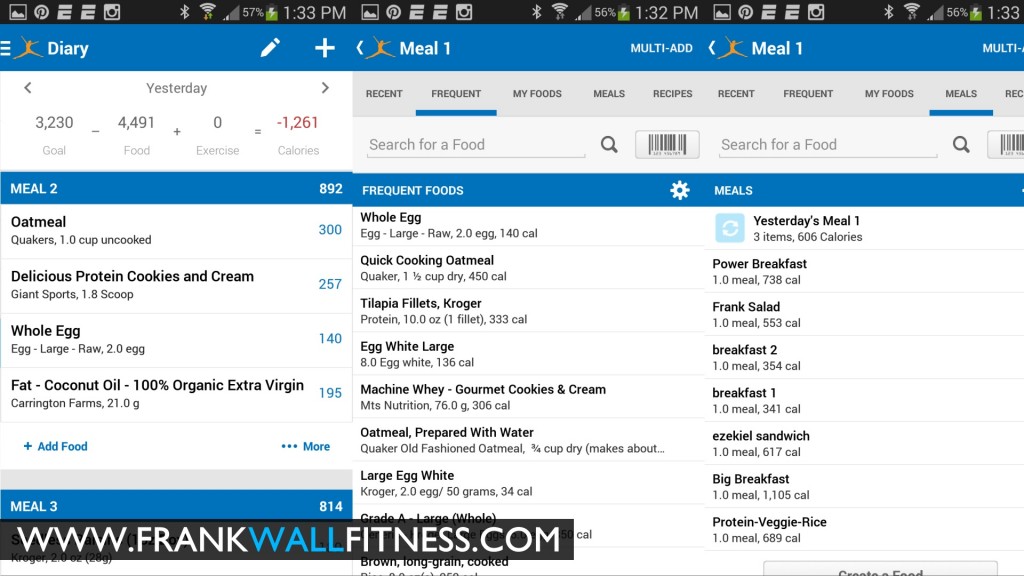You may have a goal to lose weight. I’m going to assume if you’re not eating enough calories in the first place, that’s probably your goal. Another few reasons could be that you are just making excuses for not having time to eat, prep your food, or you’re just not hungry . Considering every year the number one new years resolution is to lose weight, the average person automatically feels they need to eat less. As I said in Part 1, if your body doesn’t get the nutrients and calories it needs for everyday functions, fat burning will slow down while performance in other areas decreases as well. Let’s take a couple of steps in the right direction to get you eating enough calories for what your body needs. Starving yourself isn’t the way to go! Some people train there bodies to get used to this and hunger eventually decreases. The body tries to deal with the absense of calories. Sure, you may lose weight, get super skinny (you could have loose skin if this is your goal), appear leaner (possibly), lose SOME fat (maybe), definitely burn muscle (MAJOR NO NO!), or try to accomplish whatever your goal is by not eating. This usually ALWAYS harms you in the long run. Don’t create short term goals. Create goals that will last and you can maintain. Intense dieting usually has a bad rebound effect. Will you honestly feel better? Will this give you more energy? Will you look more fit in the long run? Will your performance improve? Will you become more mobile? Ask yourself these questions before you start any plan. Even if you don’t eat junk calories all the time and the foods you choose are super clean, you could still be under eating. Keeping yourself famished and dieting too hard past what your body needs for it’s base metabolism is dangerous. There’s two ways to solve this problem. 1st, measure your estimated metabolic rate. 2nd, experiment with a solid meal plan. An equation to use to find a round-about answer for your resting metabolic rate is the Mifflin-St Jeor Equation. This would be based on your age, height and weight. Your real resting metabolic rate can vary greatly depending if you were 200 lbs and 6% body fat or 200 lbs and 50% body fat. Dr. Tyrone A. Holmes states “Once you have determined your basic metabolic rate, you need to multiply it by the appropriate activity factor to determine your daily caloric needs: Activity Factor
- 1.200 = sedentary (little or no exercise)
- 1.375 = light activity (light exercise/sports 1-3 days/week)
- 1.550 = moderate activity (moderate exercise/sports 3-5 days/week)
- 1.725 = very active (hard exercise/sports 6-7 days a week)
- 1.900 = extra active (very hard exercise/sports and physical job)”
Mifflin-St Jeor Equation(calories/day): (Your resting metabolic rate) Male: 9.99 x weight + 6.25 x height – 4.92 x age + 5 Female: 9.99 x weight + 6.25 x height – 4.92 x age – 161 weight in kilograms, height in centimeters, age in years This equation paired with the activity multiplier can give you an idea of where you are at. The most common place I would go to is Life Time Fitness for a more accurate assessment. They have all of the New Leaf Fitness equipment to perform a metabolic test which generally is inexpensive compared to getting it done through certain doctor’s offices. (If they even have the equipment) Most of the time, the results from the test can even be input into some heart rate monitors for a more accurate calorie burn when you train. Again, all tests have some margin of error, but it’s still important to try and find out your own personal numbers so you don’t have to guess as much with your nutrition. Make an appoinment with Katrin Gebhard at Lifetime Fitness John’s Creek. She’ll take care of you. If you’re smart enough with your food & have an idea of what calories you consume in the first place, finding out your metabolic rate may not even be needed. You could make minor changes to the way you eat and start seeing results immediately. For others, this may involve more work to see changes. Every person is built uniquely. Sometimes another person may require more tests to solve a health problem. Other times, you start adding extra fruit, vegetables, proteins and the health issue is gone. What gets measured, gets improved! Track what you eat and how you train. See what you’re eating now, compared to what your estimated metabolic rate is. You can use those variables to see how accurate the measurement is for you, and the changes you need to make from there. 
